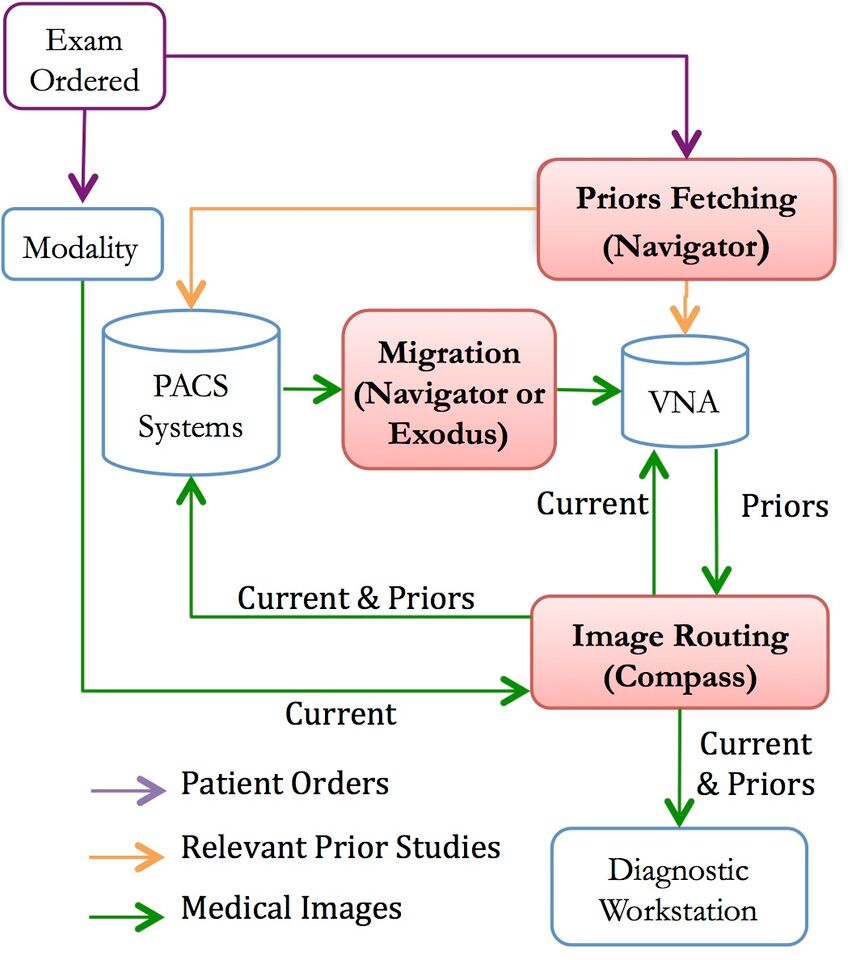By Mark Blair – President and CEO of Laurel Bridge Software
As I participate in discussions about enterprise imaging strategies, I consistently hear the following goals being targeted, in no particular order:
- Simplify management of clinical information and technology infrastructures.
- Consolidation and integration of all medical image data (radiology, cardiology, pathology) across disparate and non-normalized systems.
- Provide caregivers access to a broader range of clinical information from the EHR.
- Improve interoperability among clinical applications.
 Interoperability is one of today’s buzzwords that is receiving a lot of attention in healthcare IT, and for good reason. While we must solve the interoperability challenge, I believe interoperability is really a means to achieving improved workflow and information sharing between systems that might not natively communicate. If we don’t achieve improved workflow and information sharing than interoperability is irrelevant.
Interoperability is one of today’s buzzwords that is receiving a lot of attention in healthcare IT, and for good reason. While we must solve the interoperability challenge, I believe interoperability is really a means to achieving improved workflow and information sharing between systems that might not natively communicate. If we don’t achieve improved workflow and information sharing than interoperability is irrelevant.
As organizations develop their enterprise imaging strategies, prioritize needs and build a business case for the technologies they feel are needed reach their goals, a Vendor Neutral Archive (VNA) solution will likely be part of the mix. Often it is one of the first items implemented, in part because a well-designed VNA solution can go a long way towards resolving the enterprise imaging challenges stated above. One caveat is that healthcare organizations should be careful to not make the VNA a strategic goal by itself, but keep in mind that enterprise imaging strategies must address a range of functional issues such as: data migration and normalization, tag morphing, de-duplication, lifecycle management, routing, fetching and viewing in order to enable the workflows that help achieve the broader organizational and clinical care goals stated above. Complicating matters is the emerging thinking about the de-constructed PACS strategy that is gaining ground among radiology thought-leaders and is influencing their approach to enterprise imaging strategy development. A laser focus on universal viewing platforms, image enabling the EHR and universal workflow managers and worklists may inadvertently cause the organization to miss opportunities to improve imaging workflow automation today.
Clinical department leaders may find it valuable to expand their use of existing workflow automation and interoperability solutions to bridge near-term workflow gaps while a broader enterprise imaging strategy is being formulated and budgeted by the organization. It is likely that existing imaging workflow solutions could play an expanded role across the enterprise to enable automated routing, fetching, tag morphing and data normalization across systems with inconsistent implementations of medical imaging communications standards. The resultant workflows can simplify a VNA implementation by creating a flexible and robust environment into which it can operate.
Leveraging unified thinking and processes about how to more effectively use existing technologies can help an organization extract value from existing workflow solutions today to improve organizational efficiency and productivity now. In essence, the clinical departments can start down a path towards “enterprise unification” ahead of a broader initiative. With this in mind, imaging leaders are in an excellent position to help their organizations automate and unify medical imaging workflows that address today’s requirements and facilitate the realization of an enterprise imaging strategy that includes new technologies such as a VNA, with minimal workflow interruption.



